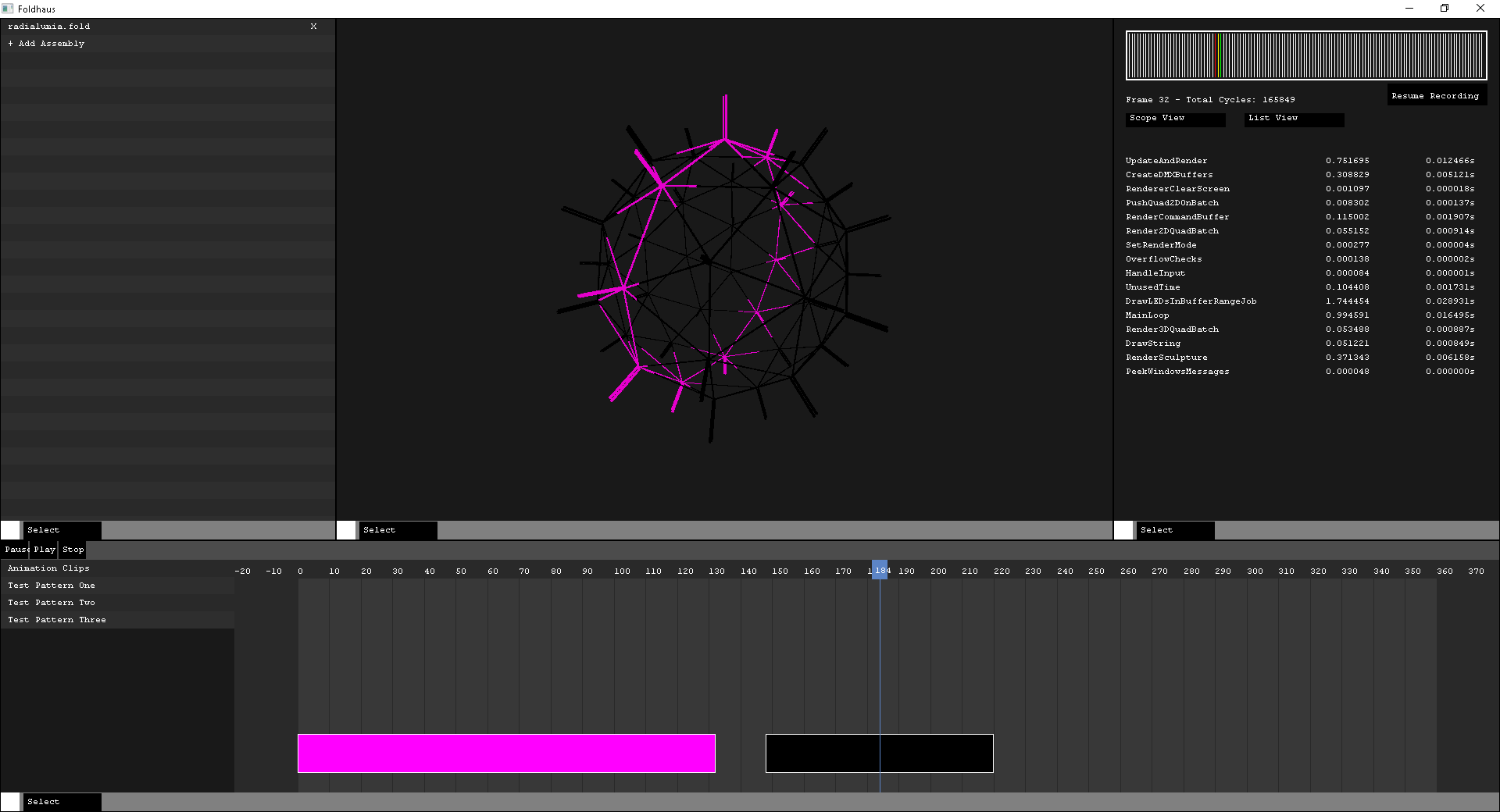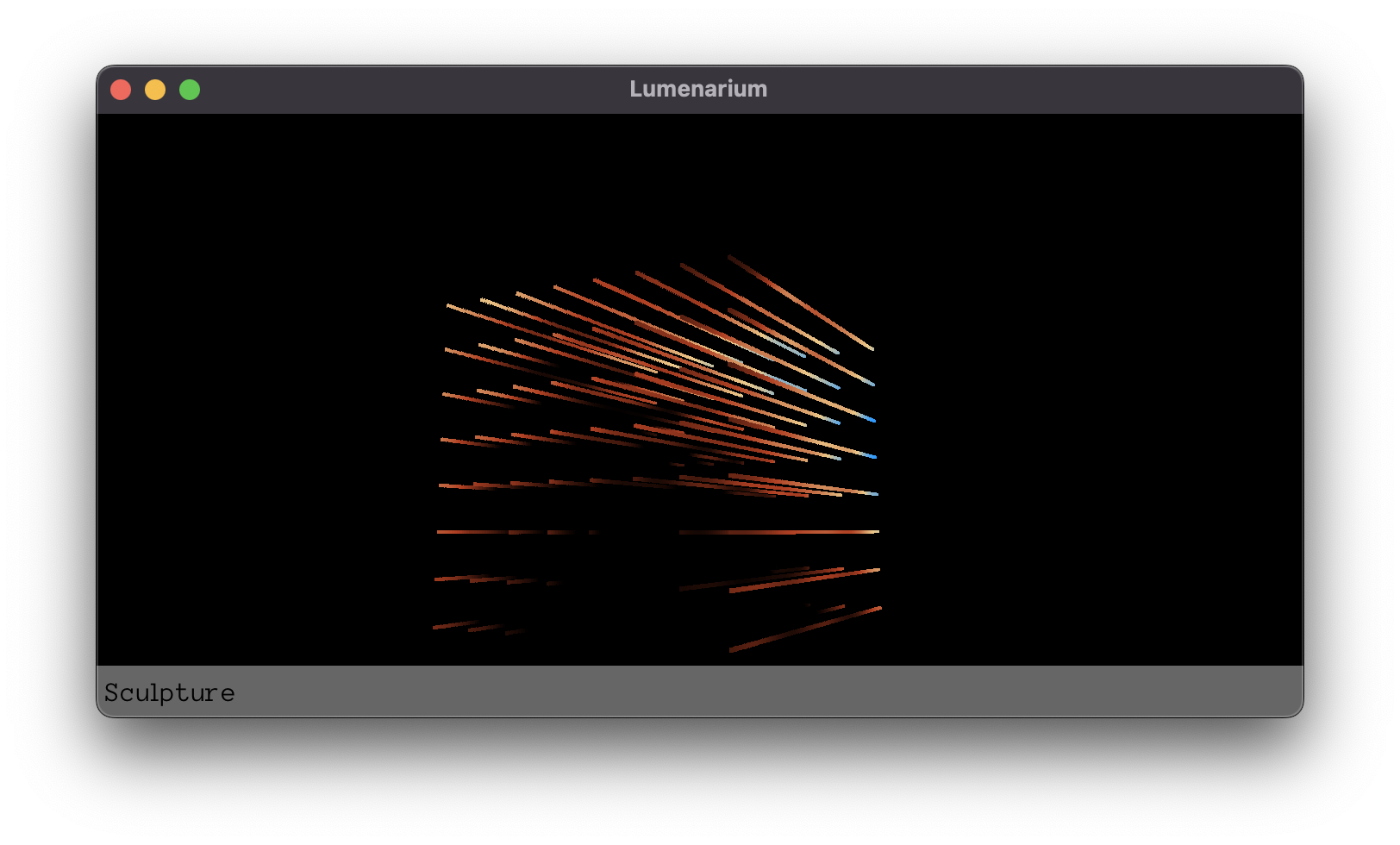While technically, ANSI E1.31 - 2016 never states that the correct acrynom is `sACN`.. but the internet believes that to be the case =) |
||
|---|---|---|
| .vscode | ||
| build | ||
| docs/images | ||
| run_tree/data | ||
| src | ||
| .gitignore | ||
| README.md | ||
| project.4coder | ||
README.md
Lumenarium by Foldhaus
Build Lumenarium
Build Dependencies:
- clang
- bash
- Note for Windows Users: You can still run bash scripts using git-bash (my recommendation) or WSL
To build Lumenarium:
- Clone the repo onto your computer
- Run
build\build.shwith the appropriate platform, architecture, and release mode flags
- Example:
build\build.sh debug osx arm64 - You can see the full list of supported flags by running
build\build.shwith no arguments
- Build scripts will output executables into the run_tree directory.
- The above example will output the following executable:
run_tree\osx\arm64\debug\lumenarium
This repository features a .vscode directory which has been set up with a build task and launch.json to work out of the box.
- Note: I have not been able to test the configuration on Windows or Linux. Feel free to open a PR if you find something is wrong with the vscode setup
What Is Lumenarium?
Lumenarium is our custom build light and motion control software. It allows us to design light and motion patterns for our sculptures, visualize the output long before the sculpture is built, and iterate in real time to achieve the best visual results quickly.
Lumenarium has been used in several sculptures in museums, permanent installations, and at Burning Man. Lumenarium was developed in collaboration with Foldhaus. The current iteration of Lumenarium was developed while working on Incenter for Burning Man '22.
Features
NOTE: These were features from an earlier version of Lumenarium and are still being ported over to the v2 codebase

- Sculpture File Format
- DMX Output
- Live Visualization
- Animation Timeline
- Node Based Pattern Creation
- Live Compilation Reload
Sculpture File Format
Sculptures are specified via a structured text file so that it is easy to represent new sculptures, simply as strips of LEDs.
Documentation coming soon.
DMX Output
Lumenarium supports sACN output, and ArtNet is in development, via a DMX system which underlies them both.
Live Visualization
We don't always have access to our physical sculptures while working on the lights and motion for them. Having a visualization of the sculpture lets us see what the patterns we develop will look like when running on the actual sculpture.
The visualization runs in real time, and mirrors the DMX output the sculptures will receive, so any changes made in the software are immediately reflected, both in the visualization and in the data sent over the network.
Animation Timeline
One goal of Lumenarium is to enable fine-grained control over procedural light and motion patterns. Patterns can be arranged on a timeline for manual sequencing.
Coming Soon
- Pattern Fading/Cross fading
- Pattern parameter controls
Node Based Pattern Creation
Pattern creation also happens within Lumenarium. Rather than program individual patterns in code, Lumenarium provides a node based interface to combine small units of functionality to create patterns. These patterns are available for sequencing in the animation timeline.
Coming Soon
- compilation of node based patterns
- more nodes!
Live Compilation Reload
One of the most fulfilling parts of working on these sculptures is getting to iterate live on the lights and motion in front of the physical sculpture while on active display. While Lumenarium is designed to enable everyone to shape the visual identity of our sculptures, it also allows for low-level, fine grained control over the visual output as well. The software is split into a platform layer (currently Windows only, though there are plans to support Mac, and possibly Raspberry Pi), and an application library. The application library can be recompiled and hot loaded while the software is running to facilitate the fastest possible iteration time.
To see how this works in detail see Handmade Hero
